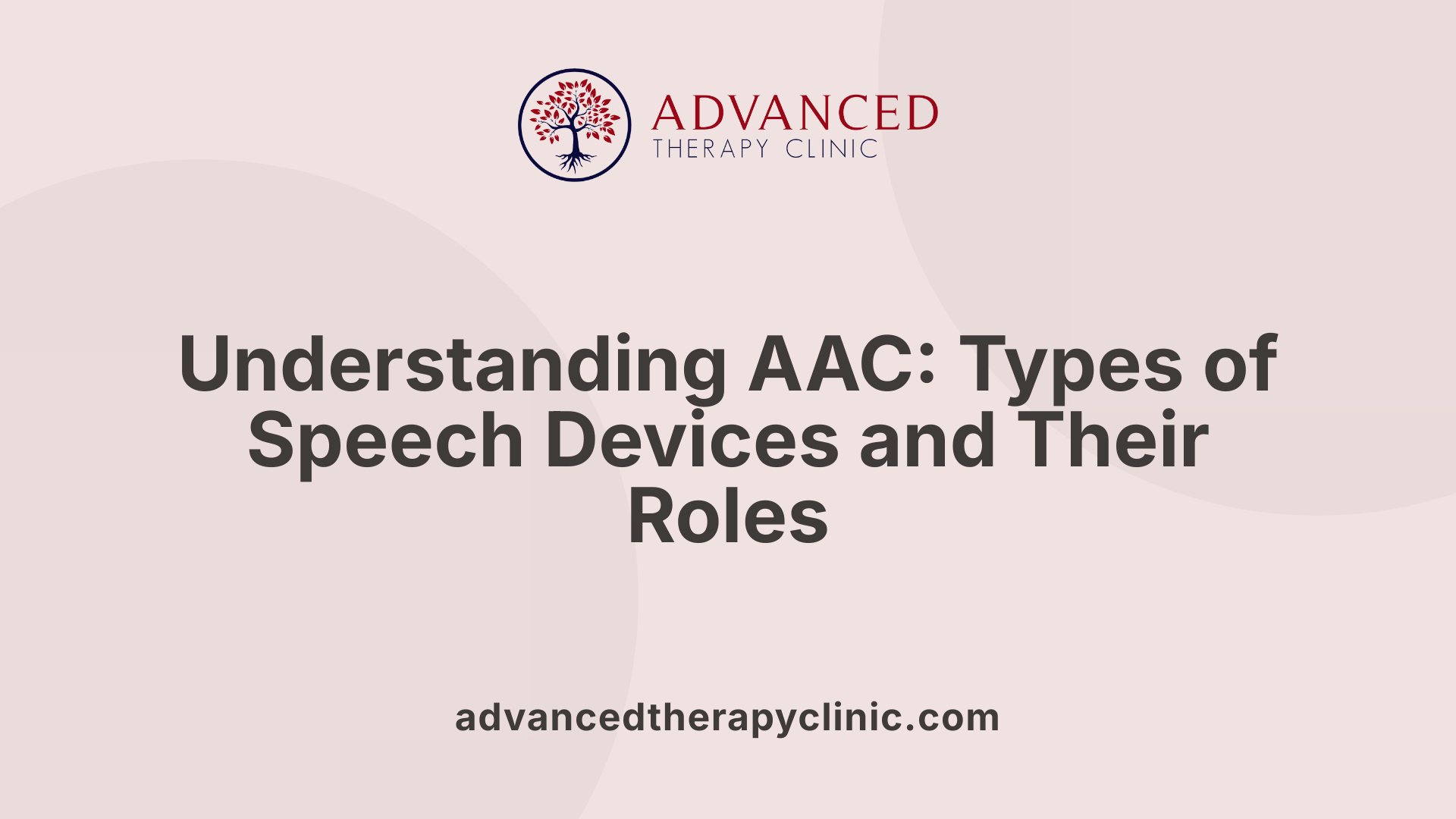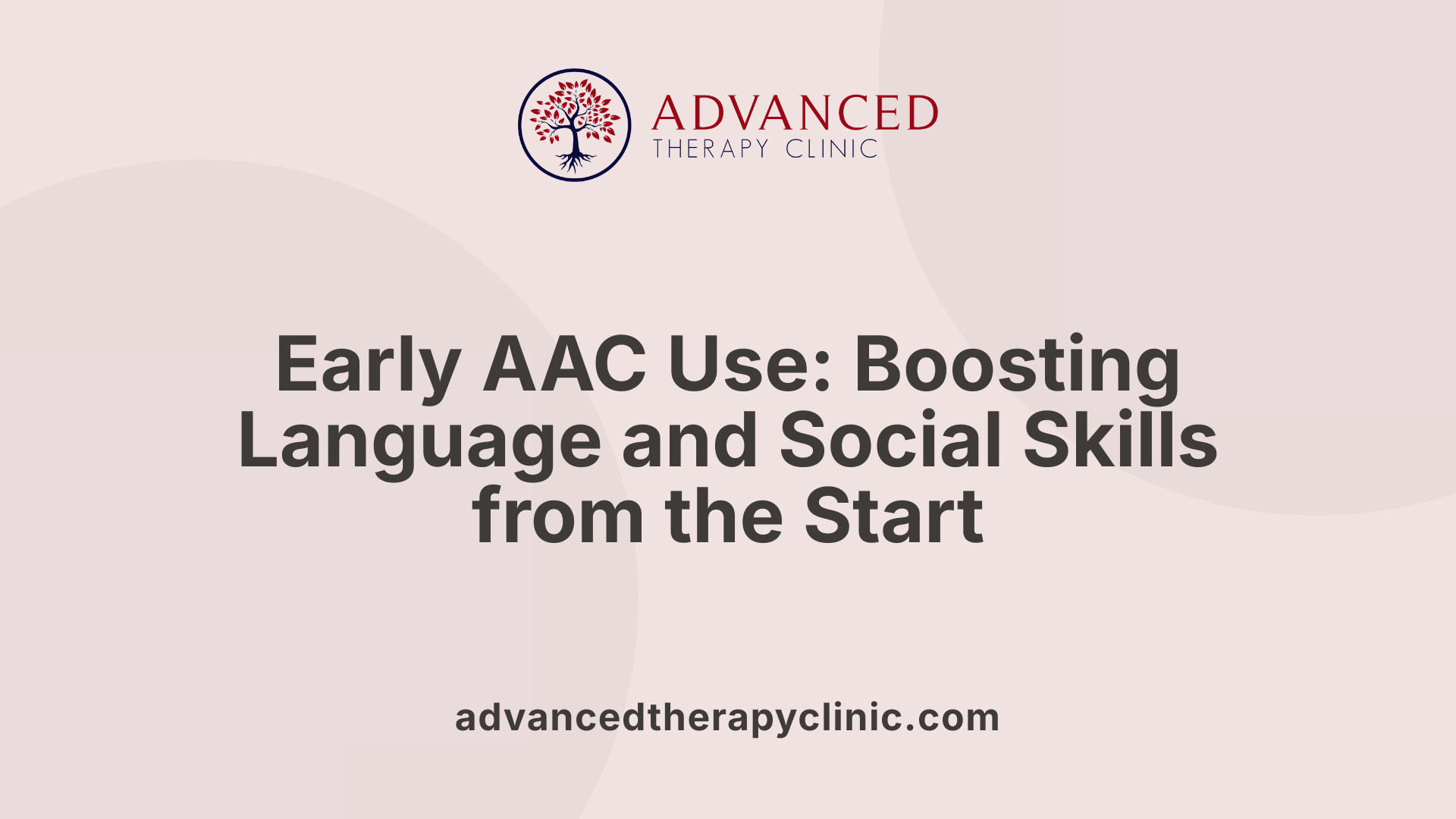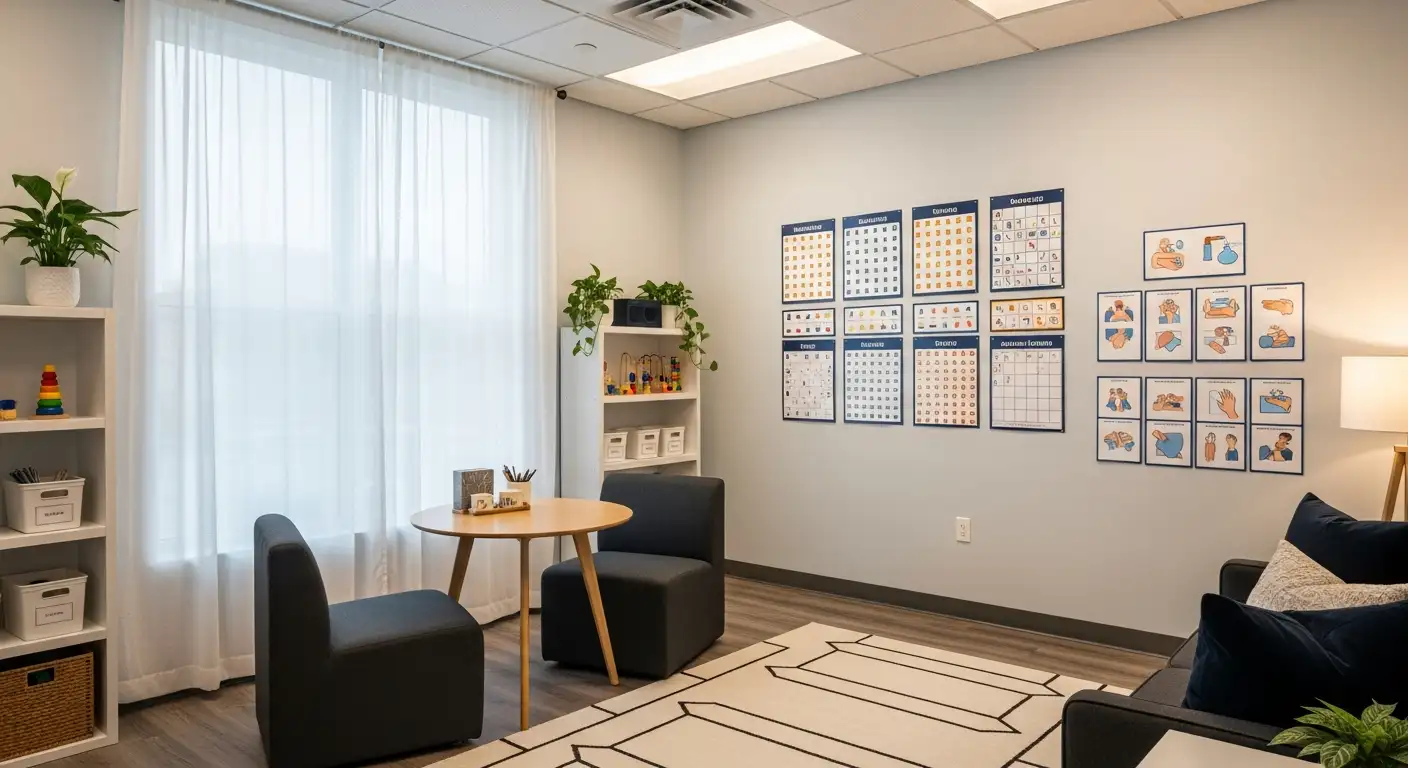Adapting Speech Devices for Children with Unique Needs


Understanding the Role of Speech Devices for Children with Unique Needs
Children with unique communication needs often face challenges that traditional speech methods cannot address. Augmentative and Alternative Communication (AAC) devices offer critical support, enabling children with diverse diagnoses to express themselves effectively. This article explores how speech devices are adapted to meet these children’s individual requirements, covering the interdisciplinary approaches, early interventions, and the benefits AAC provides in fostering communication and overall development.
The Basics of AAC: What Are Speech Devices?

What is AAC and what kinds of devices does it include?
AAC, or augmentative and alternative communication, refers to a range of methods that children can use to communicate without speaking. These methods include no-tech options, such as gestures and sign language, as well as low-tech tools like picture boards and communication books. On the higher end, high-tech speech-generating devices provide digital voices for children who have difficulty with verbal speech.
Types of AAC devices
There are multiple types of AAC tools available, chosen based on a child's individual communication needs. No-tech options include gestures, facial expressions, and sign language, which require no equipment. Low-tech devices might include communication boards with pictures or symbols. Mid-tech tools are simple electronic devices that produce recorded messages. High-tech AAC devices are advanced speech-generating devices with dynamic displays, allowing children to build sentences and express complex ideas.
Purpose of AAC for children
The purpose of AAC is to provide children with a means to communicate effectively, supporting language development and social interaction. Early introduction of AAC can reduce behavioral challenges associated with frustration from communication difficulties. Importantly, AAC does not interfere with the development of verbal speech; instead, it often supports and enhances communication skills. When used consistently across environments, AAC empowers children to express their needs, thoughts, and feelings, improving their overall quality of life.
Early Introduction of AAC and Its Impact on Development

How does early introduction of AAC support children?
Introducing augmentative and alternative communication (AAC) methods early in a child's life provides them with effective tools to express themselves before they can use verbal speech. This support significantly enhances their ability to engage with others socially, leading to more meaningful interactions and relationships.
Benefits of early AAC use
Early AAC use promotes foundational language development by offering alternative ways for children to understand and use language. It opens pathways for children to communicate their needs, desires, and thoughts, preventing frustration that often leads to behavioral challenges.
Effects on language development
AAC does not hinder verbal speech; in fact, it can boost verbal communication skills. Children who use AAC have access to rich language models and can practice communication, which sets the stage for future literacy and cognitive development.
Impact on behavior
Providing children with AAC reduces behavioral challenges by minimizing communication-related frustration. When children can share their thoughts and feelings effectively, the frequency of behaviors triggered by misunderstandings or unmet needs tends to decrease.
Overall, integrating AAC methods early empowers children with communication difficulties, fostering improved language skills, smoother social interactions, and better behavior management.
Who Benefits from AAC? Diagnoses and Conditions

Which children benefit most from AAC?
Children diagnosed with autism spectrum disorder, cerebral palsy, speech and voice disorders, and other developmental conditions often benefit significantly from AAC as it addresses their unique communication challenges.
Autism Spectrum Disorder (ASD)
Children with ASD frequently experience difficulties with verbal communication and social interaction. AAC methods provide alternative avenues to express needs and emotions, supporting language development and reducing frustration.
Cerebral Palsy
Individuals with cerebral palsy may have impaired motor skills affecting speech production. AAC tools ranging from picture boards to advanced speech-generating devices help overcome these physical challenges, enabling clearer communication.
Speech and Voice Disorders
Children with speech delays or voice impairments can utilize AAC to supplement or replace verbal speech temporarily or permanently. This ensures they can communicate effectively while working on speech improvement.
Other Developmental Conditions
Various developmental disorders, such as intellectual disabilities and genetic syndromes, may limit traditional speech abilities. AAC provides tailored communication strategies suited to individual needs, fostering inclusion and participation.
Using AAC early and consistently across settings helps these children build foundational communication skills, supports social engagement, and lessens behavioral difficulties. Customized AAC options chosen by speech-language pathologists ensure each child’s communication potential is maximized.
Role of Speech-Language Pathologists in AAC Adaptation

What role do speech-language pathologists play in AAC?
Speech-language pathologists (SLPs) are essential in supporting children who use augmentative and alternative communication (AAC). Their work begins with a thorough assessment of each child's unique communication abilities and needs, determining which AAC options will be most effective. This assessment considers factors such as the child's motor skills, cognitive abilities, and social environment.
Once the assessment is complete, SLPs recommend suitable AAC tools tailored to the individual's specific requirements. These devices can range from simple low-tech options, like picture boards or gesture systems, to sophisticated high-tech speech-generating devices. The goal is to select tools that the child can use efficiently to communicate across different settings.
Training is another critical component provided by SLPs. They educate both children and their families on how to use AAC devices correctly and consistently. This instruction includes practical strategies to integrate AAC usage into daily routines, helping enhance language development and social interaction. Ongoing support from SLPs ensures that the communication system evolves alongside the child's changing needs.
Overall, speech-language pathologists play a pivotal role in the successful adaptation of AAC technologies, facilitating improved communication outcomes and empowering children with diverse communication challenges.
Debunking Myths: AAC and Verbal Speech Development

Misconceptions about AAC
A common concern among parents and educators is whether using augmentative and alternative communication (AAC) might hinder a child's ability to develop verbal speech. This myth stems from the fear that children may become too reliant on AAC tools and therefore have less incentive to attempt spoken communication.
AAC's support for verbal development
Contrary to this misconception, AAC does not interfere with verbal speech development. Instead, it serves as a supportive bridge that allows children to communicate effectively while fostering language skills. By using AAC, children have access to a reliable method of expression, which reduces frustration and behavioral challenges that can arise from communication barriers.
Early introduction of AAC supports language development and social interaction, providing children with varied diagnoses—including autism spectrum disorder and cerebral palsy—the tools they need to communicate. This early support can enhance verbal communication by encouraging language growth through alternative pathways.
Speech-language pathologists play a crucial role in integrating AAC alongside verbal speech goals to ensure a holistic communication approach. Consistent use of AAC across different environments reinforces language learning and makes it accessible at all times.
In summary, AAC is not a barrier but a facilitator that complements and sometimes even enhances verbal speech development, enabling children to reach their communication potential more fully.
Consistency and Accessibility: Using AAC Across Environments
Why is it important for AAC to be accessible in all environments?
AAC (augmentative and alternative communication) tools must be accessible to children at all times, across various settings such as home, school, and community. This continuous availability ensures that the child can express needs, thoughts, and emotions consistently. When AAC is used consistently, it helps children to generalize communication skills beyond a single environment, making interactions more natural and effective.
Consistency in using AAC also strengthens language development and social interaction by providing reliable communication options whenever needed. For example, a child using a speech-generating device at school should have access to that same device or similar tools during family activities or therapy sessions. This consistency supports learning transfer and reinforces communication habits.
Additionally, making AAC accessible across environments aids in reducing frustration and behavioral challenges that may arise from communication barriers. It ensures that children feel empowered to communicate at any time, fostering confidence and participation.
In summary, consistent and accessible AAC use promotes smoother transitions between settings, supports skill generalization, and enhances overall communication success for children with communication difficulties.
Integrating AAC with Other Therapies for Holistic Development
How does combining therapies with AAC improve outcomes?
Integrating AAC with therapies such as Applied Behavior Analysis (ABA), speech therapy, and occupational therapy offers a comprehensive approach to support children’s development. ABA focuses on behavior modification through positive reinforcement, which can complement AAC by encouraging consistent communication behaviors.
Speech therapy enhances both verbal and non-verbal communication skills, aligning naturally with AAC’s purpose to facilitate alternative communication methods. Occupational therapy addresses daily living skills and sensory processing, which are essential for using AAC tools effectively.
Benefits of an interdisciplinary approach
When these therapies are combined, they create a collaborative environment where skills learned in one area reinforce progress in others. For example, ABA’s behavior management strategies can encourage the use of AAC devices, while speech therapy focuses on expressive language development supported by AAC.
Occupational therapy helps children manage sensory sensitivities and motor skills required to operate AAC devices and engage in daily activities. This team approach ensures that children receive tailored support addressing multiple facets of their development.
Reinforcement of communication and daily living skills
Using AAC consistently across therapy sessions and daily environments helps generalize communication skills. The interdisciplinary method supports not only speech and language but also behavior regulation and self-care abilities.
Early and integrated intervention involving AAC and these therapies significantly improves outcomes by building a strong foundation for communication, social interaction, and independence. This holistic focus ultimately enhances the child’s quality of life and the effectiveness of all therapeutic efforts.
Applied Behavior Analysis (ABA) and AAC Synergy
What is the role of ABA therapy in supporting children using AAC?
ABA therapy is a systematic, scientific approach to modifying behaviors, widely recognized as the gold standard in autism treatment. When integrated with AAC, ABA techniques enhance communication skills by targeting specific behaviors for improvement.
ABA specialists conduct functional behavior assessments to understand the reasons behind communication challenges. Using this information, they implement behavior intervention plans that incorporate AAC strategies. Positive reinforcement encourages children to use AAC devices or tools, gradually increasing their motivation and proficiency.
Parent involvement is essential in this process. ABA programs often include training sessions for families, equipping them with techniques to support AAC use consistently across settings.
How does ABA facilitate behavior modification through AAC?
ABA assists by breaking down communication goals into manageable steps. For example, teaching a child to request an item using an AAC device involves prompting, reinforcing successes, and systematically fading assistance.
By reinforcing appropriate communication attempts, ABA reduces frustration-driven behaviors and promotes social interaction. This synergy between ABA and AAC fosters both communication and behavioral improvements, leading to better overall outcomes.
Why is parent involvement important in ABA and AAC training?
Parents serve as primary communication partners and are vital in generalizing skills beyond therapy sessions. Their active participation ensures AAC strategies are consistently used at home and in daily life, maximizing progress.
Training empowers parents to recognize communication opportunities, prompt AAC use effectively, and reinforce positive behaviors, creating a supportive environment that nurtures the child’s developmental trajectory.
Speech Therapy Goals Aligned with AAC Use
How does speech therapy complement AAC device adaptation?
Speech therapy plays an essential role in helping children maximize the benefits of AAC devices. It focuses on improving various communication skills, including verbal speech, nonverbal cues, and social communication. Speech-language pathologists (SLPs) assess each child's unique communication profile to develop personalized goals that align with their AAC device use.
By working closely with children and families, speech therapists guide them on how to effectively use AAC tools to express needs, ask questions, and participate socially. This individualized approach helps promote both expressive and receptive language development.
Additionally, speech therapy supports enhancing social communication skills like turn-taking, eye contact, and understanding conversational cues. These competencies are important for integrating AAC use into natural social interactions.
Through consistent speech therapy, children using AAC devices can build stronger communication foundations while also encouraging verbal speech when possible. This holistic approach creates a seamless synergy between AAC use and the development of broader language and social abilities.
Occupational Therapy’s Role in Communication Support
Developing Daily Living Skills
Occupational therapy plays a crucial role in helping children develop essential daily living skills such as dressing, eating, and self-care. These skills are foundational for independence and can directly impact a child’s ability to effectively engage with augmentative and alternative communication (AAC) tools. For example, improved fine motor skills aid in manipulating AAC devices, while better self-care increases overall confidence.
Addressing Sensory Processing Issues
Many children who use AAC also experience sensory processing challenges, which can affect how they receive and respond to communication cues. Occupational therapists assess and treat these sensory issues to help children regulate their sensory input. This regulation is important because it allows children to focus more easily on communication and interaction without becoming overwhelmed or distracted.
Supporting Communication through Motor and Sensory Integration
By improving motor coordination and sensory integration, occupational therapy supports children in handling various AAC devices, from picture boards to high-tech speech-generating devices. This integration creates a smoother communication experience and encourages consistent use across different environments.
In What Ways Does Occupational Therapy Assist Children Using AAC?
Occupational therapy develops daily living skills like self-care and addresses sensory processing challenges that can impact learning and communication, thereby supporting effective AAC use through improved motor coordination and sensory regulation. This holistic approach not only improves functional independence but also enhances the child’s ability to communicate effectively with others.
Physical Therapy and Its Contribution to AAC Effectiveness
Improving motor skills
Physical therapy plays a vital role in enhancing motor skills for children who use AAC. By targeting areas like gait, coordination, and muscle strength, physical therapists help children develop the physical control needed to interact more effectively with AAC devices. Improved motor skills translate into better device handling and quicker responses, facilitating smoother communication.
Supporting posture and coordination
Good posture and body coordination are essential for the prolonged use of AAC devices. Physical therapists work with children to strengthen core muscles and improve balance, which enables them to maintain comfortable and stable positions while using communication tools. This support reduces fatigue and allows for longer, more effective communication sessions.
Facilitating AAC device use
Physical therapy specifically supports AAC device use by addressing physical challenges that might hinder device access. For example, therapists help children develop fine and gross motor abilities needed to operate touchscreens, buttons, or switches. This tailored support ensures that children can fully engage with their AAC systems, promoting autonomy and improved expressive communication.
Physical therapy’s role is integral in a comprehensive AAC approach, ensuring that children’s motor capabilities align with their communication tools. By enhancing physical abilities, therapy directly boosts the child’s capacity to use AAC devices efficiently, ultimately supporting better social interaction and language development.
AAC’s Role in Building Foundations for Literacy and Quality of Life
How Does AAC Impact Literacy and Overall Quality of Life?
Augmentative and alternative communication (AAC) plays a significant role in laying the groundwork for literacy development in children who face challenges with verbal speech. By providing alternative means to express ideas, recognize symbols, and engage with language, AAC tools enable children to actively participate in learning foundational reading and writing skills.
AAC and Literacy Development
Early introduction of AAC supports not only communication but also the recognition of language patterns necessary for literacy. Children using AAC often develop better understanding of vocabulary and sentence structures, both critical components of reading and writing. This can lead to stronger literacy skills as AAC encourages interaction with symbols and text in varying formats.
Long-Term Benefits of AAC
Beyond literacy, AAC facilitates communication that helps children build social connections and reduces behavioral challenges that stem from frustration or inability to express themselves verbally. Consistent use of AAC across home, school, and social environments reinforces language development and confidence, contributing to a smoother transition into literacy and academic success.
Improving Quality of Life
By empowering children through accessible communication methods, AAC enhances overall quality of life. It allows greater independence, reduces social isolation, and opens up opportunities for learning and interaction that would otherwise be limited. The ability to communicate effectively fosters emotional well-being and enables better engagement with caregivers, educators, and peers.
Overall, AAC’s involvement from an early age creates a supportive framework that fosters literacy growth and improves day-to-day experiences for children with communication challenges.
Future Directions and Embracing Personalized Communication Solutions
Adapting speech devices for children with unique needs is a dynamic and evolving field that hinges on personalized assessment and interdisciplinary collaboration. Early AAC intervention, combined with supportive therapies like ABA, speech, occupational, and physical therapy, enhances communication and developmental outcomes. As technology advances and therapeutic approaches integrate more closely, children using AAC devices will continue to access richer, more effective means of expression, paving the way for greater independence and improved quality of life.
References
Recent articles

How ABA Therapy Teaches Problem-Solving Skills
Unlocking Potential: The Role of ABA Therapy in Developing Problem-Solving Skills

Can Autistic People Have Kids?
Parenting on the Spectrum: Strengths, Challenges, and Support for Autistic Parents

Is Your Autistic Adult Child Ready To Move Out?
Empowering Independence: Preparing Your Autistic Adult Child for Life on Their Own

The Role of ABA Therapy in Teaching Independent Living Skills
Unlocking Independence: How ABA Therapy Empowers Daily Living Skills

The Importance of Speech Therapy for Communication Development
Enhancing Communication: How Speech Therapy Shapes Childhood Development

How Behavior Analysis Helps Children Learn to Follow Instructions
Unlocking Skills: The Power of Behavior Analysis in Teaching Children to Follow Instructions

